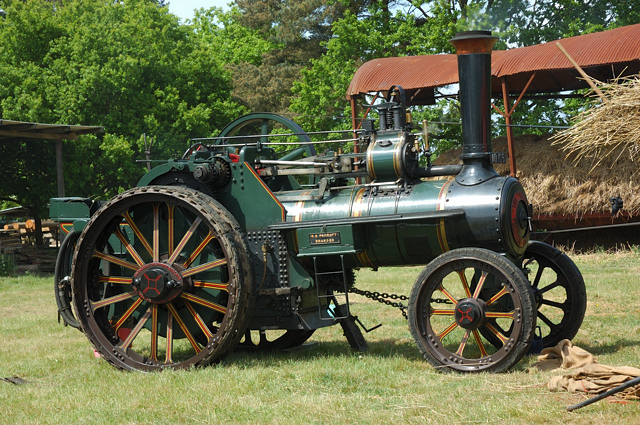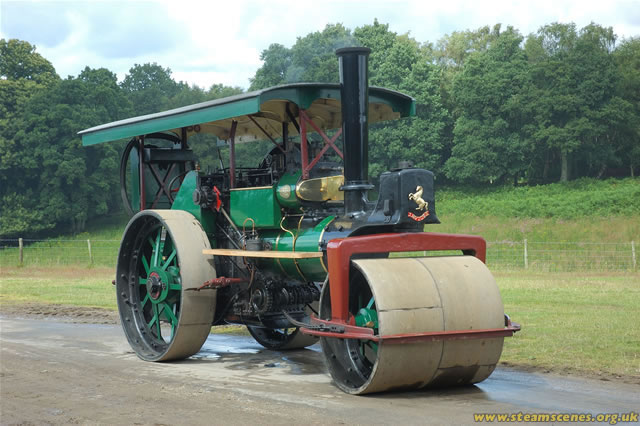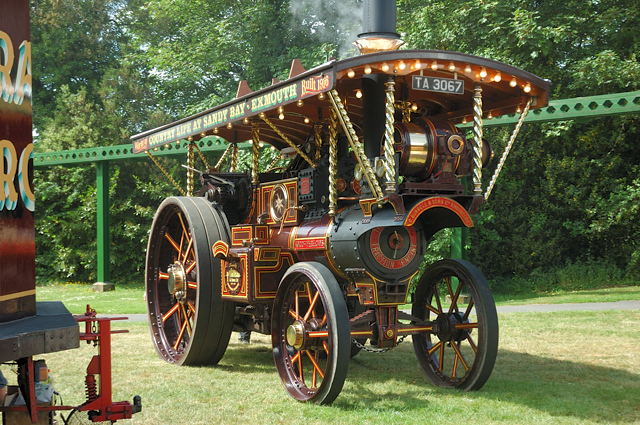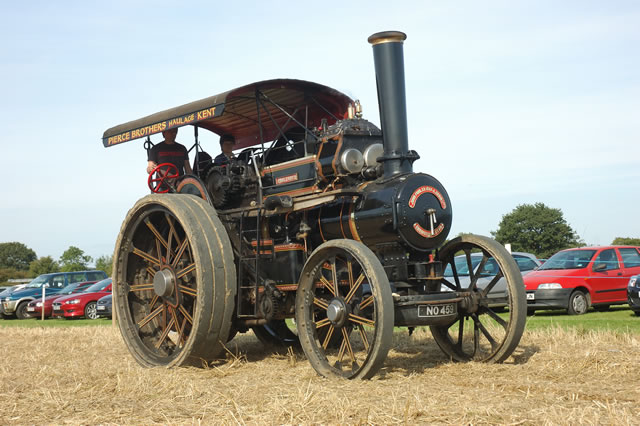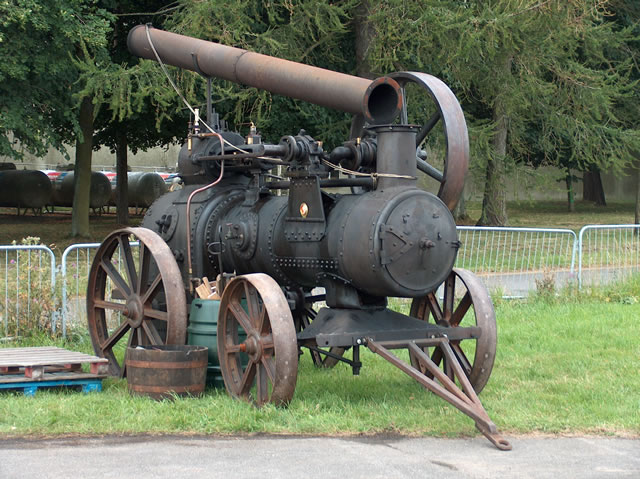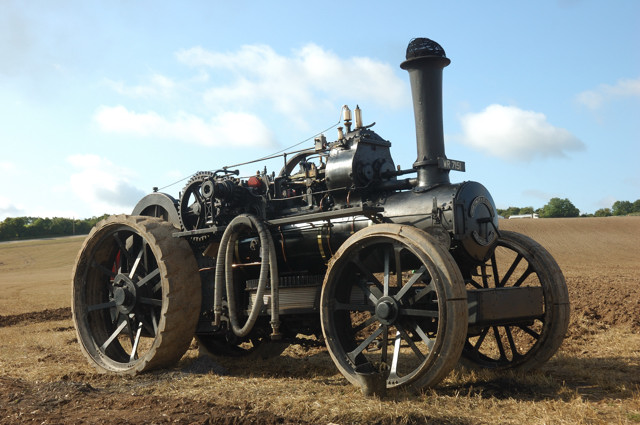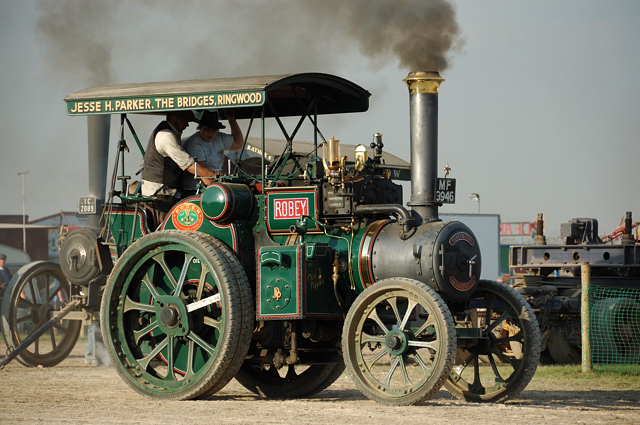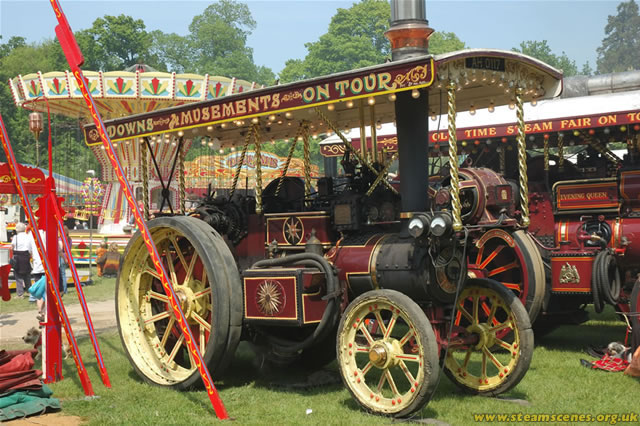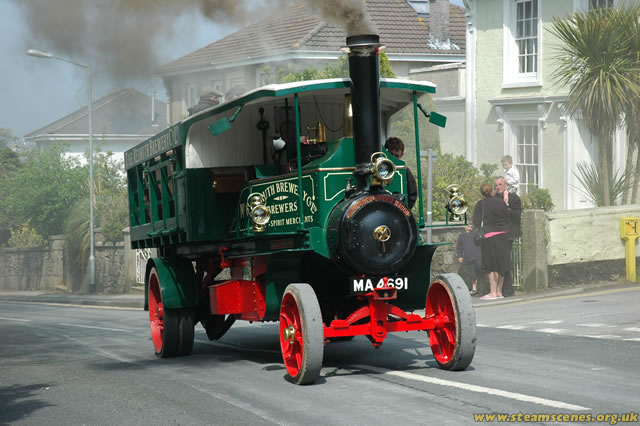Types of Traction Engine
General Purpose Engines
Traction engines or general purpose engines were the all rounders of the steam world. Produced by nearly all the English steam engine manufacturers they were commonly used for threshing corn, sawing wood, crushing stone, haulage and many more varied tasks.
Development of the traction engine started in the mid 18th century and by around 1870 the standardised design was settled upon. No one manufacturer dominated production and debates long raged about who built the best engines. They were built in a range of sizes although rules between builders prevented very small models being made.
General purpose engines were too expensive for small farmers and normally owned by contractors who moved from farm to farm to carry out their work.
Road Rollers
Steam rollers were a mainstay of steam production from their invention in the 1860's right up until the Second World War, some were even produced for overseas markets after this date.
Road roller production was dominated by Aveling & Porter of Strood in Kent. Their production was more than all the other makers combined. Other producers included Burrell, Fowler and Wallis & Steevens. Rollers could range from very small engines of around 5 tons used for rolling pavements to large 15 ton plus engines used in the North of England.
The job of the road roller was to roll crushed stone into a base which formed roads of the day, these roads were more primitive than what we are used to today. Later special road rollers were developed to roll asphalt surfaces without leaving impressions which older rollers could not do.
Showmans Road Locomotives
The showmans road locomotive was a modification of the standard road locomotive which first appeared in the 1880's and was additionally fitted with electrical dynamo at the front of the engine and a full length canopy to protect this dynamo.
Their job was hauling then powering fairground rides of the day, they were amongst the hardest worked of all engines. Burrell built the most examples of this type of engine, followed by Fowler, then Foster.
Some, but not all, were more ornately decorated than other types of engines with additional brasswork, bright paint and electric lighting to allow the engines to be operated after nightfall. They were almost always named and are now most sought after by traction engine enthusiasts.
Road Locomotives
Road locomotives were larger versions of general purpose engine built with the sole purpose of hauling large, indivisible loads. They sometimes worked in pairs, and occasionally 3 or more engines were need to pull exceptionally large items.
The main manufacturers of road locomotives were Fowler, McLaren & Burrell, although most of the other big makers produced smaller numbers of road engines at some point.
They were produced from the end of the 1800's right up until the end of steam production in the 1930's. Many new road engines were purchased by the military for use in various conflicts of the day. When these engines were sold off as military surplus they were bought by haulage contractors and put to work across various UK cities, Manchester, Liverpool, London and Glasgow in particular.
Portable Engines
More portable engines were built than all other types of engine combined. Construction was simple and the basic design remained unchanged for almost 100 years between their invention in the 1850's up until the end of production in the years after the Second World War.
A portable engine cannot move itself and was normally moved from job to job by horses. They carried out tasks similar to general purpose engines, threshing, wood sawing, stone crushing, pumping water and even generating electricity. Sizes ranged from very small engines weighing only a ton to enormous engines weighing 20 tons or more.
Lincoln and Ipswich based builders dominated, vast numbers were produced for agricultural outside of the UK, hundreds of which survive to this day.
Ploughing Engines
Cable ploughing engines were developed by John Fowler in the 1850's, Fowler went on to dominated ploughing engine production with over 95% English ploughing engines built by this one company.
Cable engines worked as a pair using rotating drums of wire rope under their boiler to pull and implement to and fro between them in a field. Direct ploughing was rarely used in the UK but was more common in North and South America. Ploughing engine were the largest type engines produced in quantity, weighing somewhere between 15 and 30 tons.
Ploughing engine production peaked before the start of the 20th century but enjoyed something of a revival with Government back food production programs during the First World War and a good number of these engines have survived into preservation.
Steam Tractors
Steam Tractors were scaled down versions of Road Locomotives which came about after changes in the law allowed one man to drive an engine providing it was below 5 tons in weight.
Nearly all steam tractors were built with compound cylinders and 3 road speeds, they were designed to be fast on the road and found favour among businesses who needed to move lightweight items around relatively quickly.
All the major steam manufacturers in the post Victorian era produced steam tractors and competition between builders as to who had the best model was fierce with several trials being setup to prove an overall winner. Winning these trials present a big marketing opportunity in this competitive market.
Showmans Tractors
Showmans tractors were simply steam tractors with a front mounted dynamo, full length canopy and some form of electrical lighting. This as on their bigger showmans road locomotive counterparts was used to illuminate the engine whilst it was powering equipment on the fairground after dark.
Showmans tractors generally powered very small rides or illuminated stalls that were dotted around the fair. They were commonly used to haul packing trucks or perhaps an owners living van between fairs and were fast on the road.
Very few showmans tractors were constructed as such new. More likely they were standard steam tractors which were converted to showmans specification later in their career. A sizeable number of tractors and road rollers have been converted to showmans tractors during preservation times such is their popularity and the romance of the work genuine examples undertook.
Wagons
Steam wagons were produced in vast numbers from the late Victorian period up until the Second World War. They were commonly available in two forms, undertype with the cylinders mounted under the bodywork and overtype with the cylinders mounted on top of the boiler in a more conventional way. Makers had their preferred arrangement but generally experimented with both ways of getting the job done.
Steam wagons were faster on the road than standard traction engines and by the 1930's were capable of in-excess of 50mph.
Changes to legislation in favour of internal combustion powered lorries made them expensive to run and the fell out of favour during the 1930's. It was not unusual however to see well worn steam lorries working as late the 1950's.
